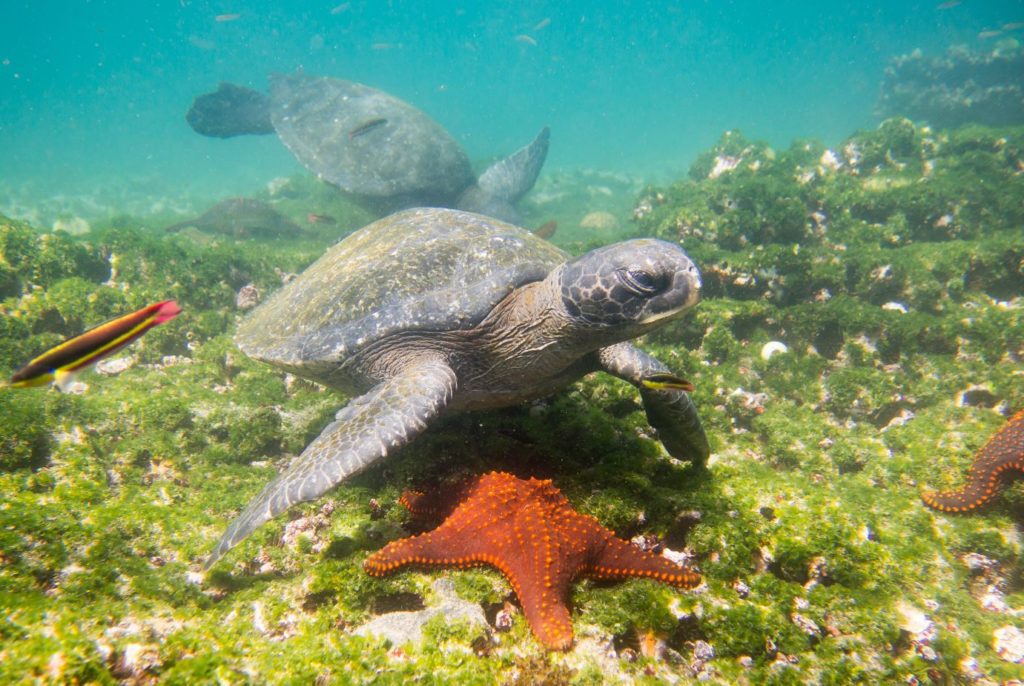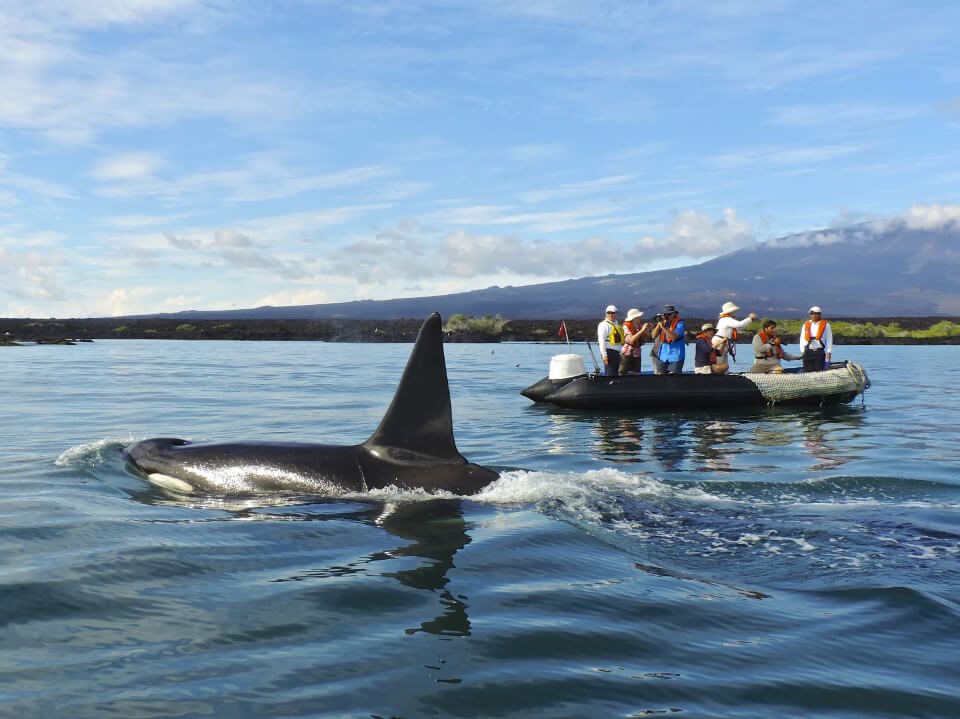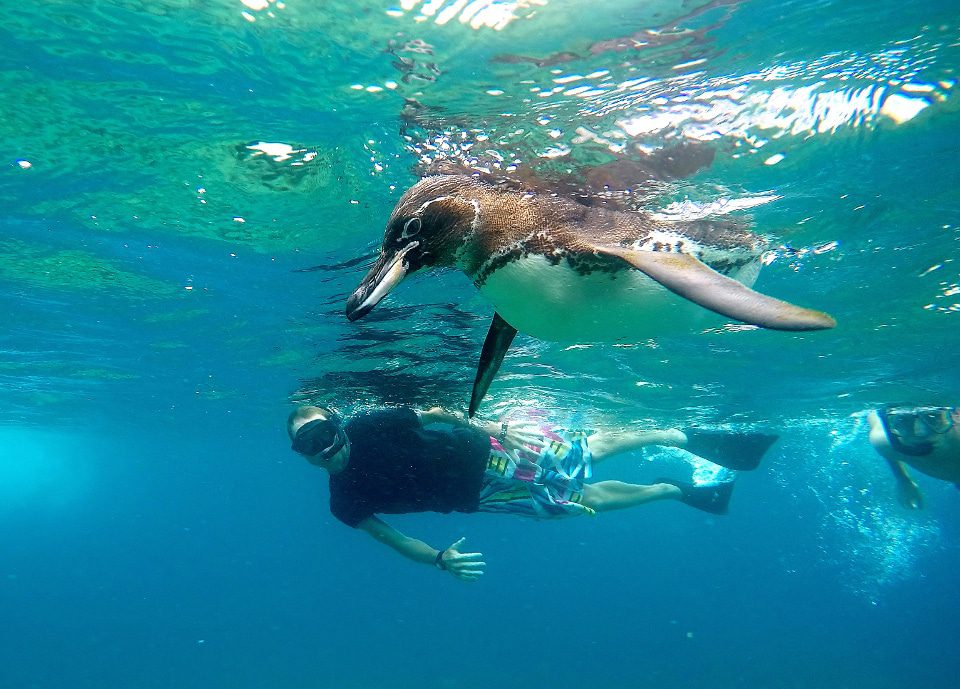I’m sure we’ve all experienced it while calmly swimming in warm water: a nippy bit of cool water slides up and over you from below, giving you goosebumps all over as your face shoots up to the surface as you wonder what just happened. In this case, it is a mere change in water temperature that warns your body to avoid exposing itself too long to the cold. But while it might tell our body to keep away, there are other creatures who thrive in such temperatures.
Productivity in the ocean is expressed by the amount of food available. This food can either be microscopic (plankton) or sometimes macroscopic (nekton). Active swimmers – such as squid, fish, rays, sharks, etc – fit in the criteria of nekton, while passive swimmers (those that are carried by the ocean currents) fit into the category of plankton. Diatoms, dinoflagellates, larval stages, and others are generally considered planktonic items. Productivity, therefore, is associated with the density of living creatures. In most cases, the cooler water of our oceans tends to be more productive than warmer locations. Factors such as salinity and temperature of the water can also have an impact on the productivity levels of the ocean.
TALK TO A DESTINATION EXPERT

Diego Zapata

Rosa Mena

Sandy Lara

Diego Zapata

Rosa Mena

Sandy Lara
Deep Submarine Currents
When very deep submarine currents move in one direction they can travel extensively for thousands of miles. Additionally, the physical and chemical characteristics of these currents can be affected by obstacles that force an abrupt change in direction or by the sudden exposure to sunlight. Very deep in the ocean, hardly any light penetrates the water column, and it is only in the last 100 meters (330 ft) that color gradually begins to appear. Blues and some greens come first, and then purples, yellows, and reds. This fascinating prism is what allows marine life to unfold. Consequently, when a huge submarine current hits the volcanic base of islands, its rapid surface approach will not only bring cool temperatures to shallow depths, but it will also let deep-water nutrients become part of the areas where both plankton and nekton reside. This is actually how “marine productivity” should be interpreted.

Upwellings
Oceanographers have coined a unique term for describing this mechanical movement of water (the onset of productivity) and it is called “upwelling.” What this means is that the deepwater upwells to the surface, chills it, and brings all sorts of nutrients along with it. Tropical places like the Galapagos Islands that are right on the equator are unique because sometimes you come across these “marine deserts” of productivity. That is of course unless upwelling occurs. It’s due to the unique volcanic substrate and underwater landscape of the western region of the Galapagos that a very deep ocean current, known as the Equatorial Countercurrent (aka Cromwell Current), moves in the opposite direction of its higher cousin – the South Equatorial Current (SEC). This cold and nutrient-rich volume of water hits the volcanic base of both Isabela and Fernandina Islands and it crawls up fast and strong, turning a not-so-productive marine area into a blooming haven for the sea of life. This upwelling force has been studied extensively and it provides the tropical Galapagos Islands with a unique set of subtropical conditions that are found at higher or lower latitudes. The tropics can actually physically turn cool on the surface when upwelling takes place.

Living at 0°0’00” Latitude
It’s thanks to these conditions that penguins, boobies, pelicans, fur seals, sea lions, whales, dolphins, and dozens of cold-water fishes can live right at 0°0’00” Latitude. This is what makes the islands unique, but also so different from other cooler and warmer places. To thrive here, tropical species need to be capable of withstanding subtropical conditions, and subtropical species need to withstand tropical conditions. The result: the creation of an ever-changing world. Any of the Santa Cruz II’s expedition itineraries in the Galapagos can provide you with such experiences, and in order to find any of these tropical extremes, you must try and spend time on any expedition that travels out to the far west of the archipelago.
When snorkeling in the Galapagos Islands, it’s very common to find that strip of cool water that makes us shiver, develop goosebumps, but also gives us the chance to see a penguin in the tropics, a fur seal in warm water, or even a foggy and enigmatic sunrise right on the Equator. You have to love these upwellings, for they keep the uniqueness of Galapagos alive and guarantee the magical wildlife encounters to all that visit!


Javier Garcia

Eduardo Silva

Carolina Escobar
START PLANNING YOUR TRIP

Javier Garcia

Eduardo Silva

Carolina Escobar
Get in touch for more
CONTACT US
Text Adaptation & Photography by Francisco Dousdebés – Galapagos Expert, Fernandina Island, August 7th, 2017 L&L: 0°26’S / 91°43’W


